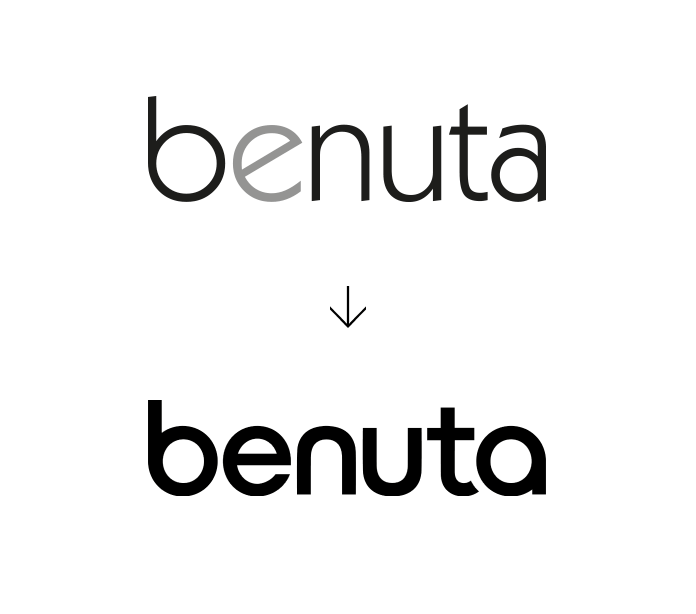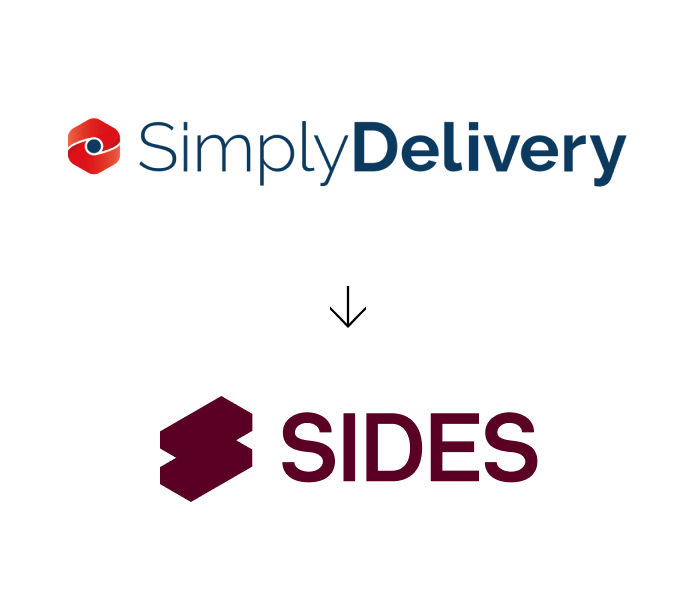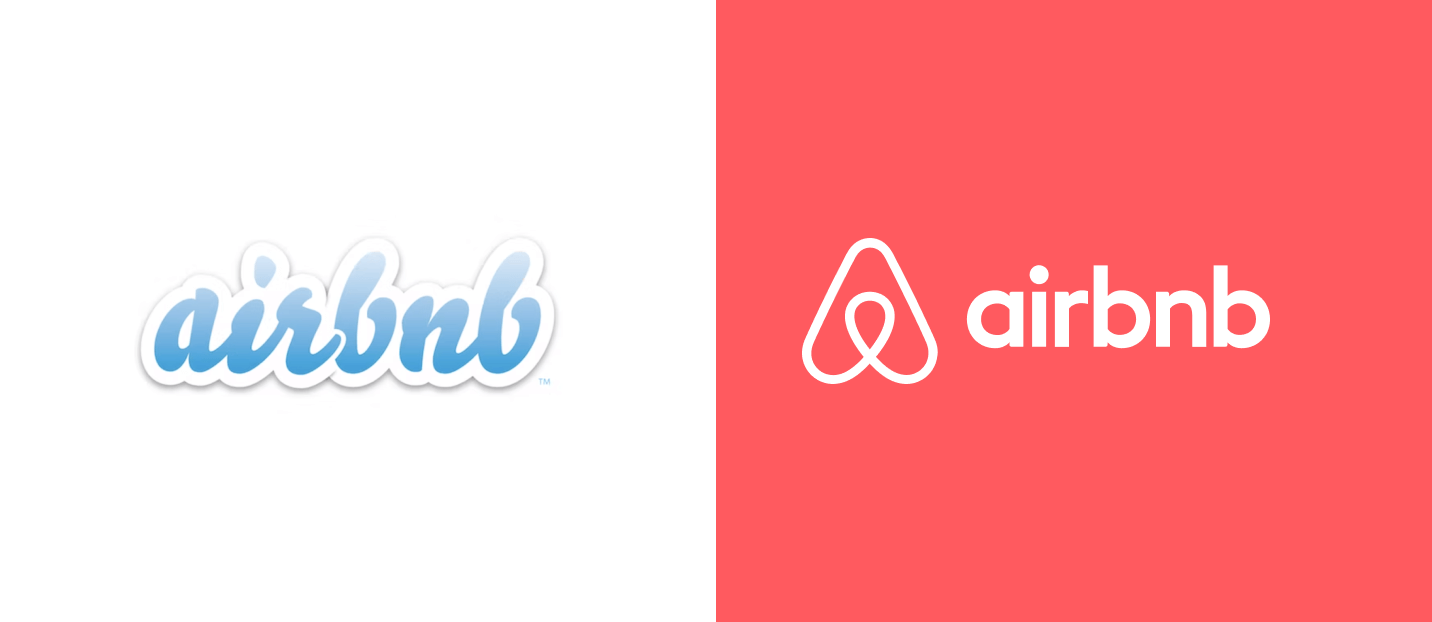When the company evolves but the branding doesn’t
Companies are busy every day optimizing their offering in order to gain market share. Branding is the expression of the result of these efforts; it makes performance and USP visible and tangible. Keeping an eye on strategy, portfolio and brand in equal measure is not always successful – often to the detriment of branding. At some point, you realize that the brand has literally outgrown its brand design. This in turn is not only very unsatisfying for the people behind the brand, but also leads to unnecessary cognitive dissonance among customers and partners, in the team and among talents.
We support you in constructively challenging your brand identity and translating your brand strategy into a rebranding. This ensures that your performance and values are represented appropriately – in the market, for your target groups.
The rebranding process: From repositioning to new design
Effective brand management involves regularly reviewing your strategy and positioning. To ensure your rebranding is more than cosmetic and reflects true development, we consider all relevant external and internal influences in our brand process:
-
What is driving the new or revised brand look?
-
Has the corporate strategy, culture, or target audience changed?
-
How should the brand position itself moving forward?
Based on these factors, we conduct a brand audit of the current design. This could lead to a brand update, a partial rebranding, or a complete overhaul.
Design Update vs Redesign vs Rebrand
Depending on your brand’s situation and goals, you might only need small adjustments or a complete transformation.
-

Brand Design Update
The design still meets the brand’s needs. Minor visual tweaks are made, such as logo refinement or color adjustments.
-

Brand Redesign
Major elements like colors, typography, or imagery are changed, while core aspects (like the logo or positioning) stay the same. Ideal when expanding your product/service portfolio.
-

Full Rebrand
A full strategic realignment is carried out, often including a new brand name. A new design and messaging system are developed based on updated values, audience, and offerings.
When is it time to rebrand?
We’ve identified common scenarios where a rebranding is helpful – or even necessary.
Rebranding instead of a temporary fix
Many start-ups begin with a provisional brand identity due to limited resources. Over time, the brand maturity outgrows the corporate design. A thoughtful rework can strengthen perceived professionalism.

Brand Redesign after using a temporary branding for 6 years
Rebranding due to new products or services
When your offering expands, your brand should evolve with it. A rebranding can highlight innovation and help reach new target groups. It also signals transformation and attracts attention.

Full Rebrand after expanding services show case
Design update due to internationalization
Different countries mean different customs. If you’re entering new markets, cultural differences might require branding adjustments in color, tone, or even name.
Lidl’s transformation in the USA: New slogan and new design elements to better position the brand in the competitive US market.

Want to know if your brand still shows what it can do?
Request a brand audit now
Design update due to leadership change
A shift at the C-level often brings a strategic pivot. Rebranding can visually mark this shift.
For example: Since 2023, under new leadership, Weleda modernized its brand strategy, aiming to reposition itself as a high-end brand in the natural cosmetics segment – with a new online shop, updated corporate design, and more social media engagement.

From green niche to anti-aging mainstream: Weleda is repositioning.
Rebranding after structural changes
Depending on the brand architecture strategy, mergers and acquisitions require interventions in the brand identity.
New members bring their own corporate philosophy, new employees and customers, and their own image into the brand family, which must be integrated strategically, culturally, and visually.

5 Data Engineering companies rebrand to synvert.
The world is changing – and brands need to respond.
Societal shifts influence markets, lifestyles, and needs. A brand’s relevance depends heavily on its ability to recognize the zeitgeist and position itself accordingly.
What happens when companies ignore the signs of the times is evident in the cases of Nokia, BlackBerry, or Victoria’s Secret.
Rebranding example: MasterCard
The MasterCard logo has evolved several times over the years, with a major shift occurring in 2016. Originally introduced in 1966 as overlapping red and yellow circles combined with a wordmark, the logo became widely recognized around the world.
In 2016, MasterCard made the bold decision to remove the wordmark from the rings, placing full emphasis on the iconic symbol of the two intersecting circles.

This move marked a pivotal moment in establishing the rings as a standalone, globally recognized brand element. Since 2019, MasterCard has completely dropped the wordmark, further reinforcing the strength and worldwide recognition of its logo.
Recognizes the signs of the times
“Looking old,” in the literal or figurative sense, is something no one wants – and rightly so. For brands, be they B2C, B2B or B2B2C, branding on the cutting edge is essential for survival. If zeitgeist and aesthetics do not go hand in hand, the brand will appear outdated and thus less attractive and trustworthy. An outdated visual identity allows stakeholders to draw corresponding conclusions about a company’s competitiveness and attitude.
A contemporary, strategic brand design contributes to corporate success:
- signals innovative strength
- attracts customers, partners and talents
- makes employees proud to be part of your team
Rebranding in 3 steps
-
Briefing
You give us insight into your goals for the brand.
-
Brand Design
Based on your briefing and brand strategy we develop your brand design.
-
Brand Relaunch
You position yourselves clearly in the competition.
Rebranding FAQ
-
What is rebranding?
Rebranding includes a series of measures with which the perception of a brand is controlled in a targeted manner. These can be of a strategic and design nature and range from a new logo to a new brand design to a new name.
-
Why do a rebranding?
Frequent reasons are internal, personnel or structural changes, e.g. the expansion of the service portfolio, the expansion into other markets or the acquisition of new target groups as well as the modernization of the brand image in order to meet social changes and thus remain competitive.
-
How does rebranding work?
Rebranding means reviewing the brand holistically with a view to realignment. This means evaluating which elements of the strategy and the design will pay off for the future brand and which will not – and aligning them accordingly.
-
What do you need to consider when rebranding?
Rebranding is not about making quick cosmetic changes just to meet a trend. Rebranding should always correspond with the strategic realignment of the brand.
-
When does a rebranding make sense?
Rebranding makes sense when the brand no longer reflects the company’s performance and culture. The aim of a rebranding is to maintain and increase the trust and desirability of the brand among relevant target groups.
-
How much does rebranding cost?
The costs of rebranding always depend on the scope. The brand audit is a suitable introduction to the process: it provides information about the necessary measures and helps to plan the scope accordingly.
-
How long does a rebranding take?
4–8 weeks, depending on the project scope.
Your brand needs a makeover?
Contact us.

Dr. Birgit Joest
Co-Founder, Strategy Director
Als Brand Strategist hat Dr. Birgit Joest internationale Marken wie Mercedes-Benz, Telekom oder O2 betreut, bevor sie mit Maurits den Held die BRANDING AGENTUR Helder gründete. Birgit Joest ist Beirätin, zertifizierte StoryBrand Guide und Vorstandsmitglied des VdU Berlin.
 Book Call
Book Call
